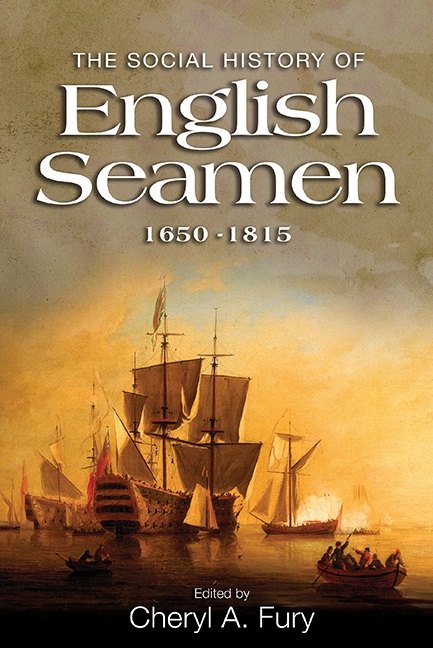Book contents
- Frontmatter
- Dedication
- Epigraph
- Contents
- List of illustrations
- List of contributors
- List of abbreviations
- Introduction
- 1 The Development of Sea Power, 1649–1815
- 2 Naval Seamen, 1650–1700
- 3 Officers and Men of the Navy, 1660–1815
- 4 The Impact of Warfare on Naval Wives and Women
- 5 Officers, Shipboard Boys and Courts Martial for Sodomy and Indecency in the Georgian Navy
- 6 Health Provision in the Royal Navy, 1650–1815
- 7 The Origins and Careers of English Merchant Seamen in the Late Seventeenth and Early Eighteenth Centuries
- 8 Private Enterprise, Public Policy and the Development of Britain's Seafaring Workforce, 1650–1815
- 9 Jack Tar's Food: Masculine Self-fashioning in the Age of Sail
- 10 Pirates, Privateers and Buccaneers: The Changing Face of English Piracy from the 1650s to the 1720s
- Conclusion
- Bibliography
- Index
8 - Private Enterprise, Public Policy and the Development of Britain's Seafaring Workforce, 1650–1815
Published online by Cambridge University Press: 11 August 2017
- Frontmatter
- Dedication
- Epigraph
- Contents
- List of illustrations
- List of contributors
- List of abbreviations
- Introduction
- 1 The Development of Sea Power, 1649–1815
- 2 Naval Seamen, 1650–1700
- 3 Officers and Men of the Navy, 1660–1815
- 4 The Impact of Warfare on Naval Wives and Women
- 5 Officers, Shipboard Boys and Courts Martial for Sodomy and Indecency in the Georgian Navy
- 6 Health Provision in the Royal Navy, 1650–1815
- 7 The Origins and Careers of English Merchant Seamen in the Late Seventeenth and Early Eighteenth Centuries
- 8 Private Enterprise, Public Policy and the Development of Britain's Seafaring Workforce, 1650–1815
- 9 Jack Tar's Food: Masculine Self-fashioning in the Age of Sail
- 10 Pirates, Privateers and Buccaneers: The Changing Face of English Piracy from the 1650s to the 1720s
- Conclusion
- Bibliography
- Index
Summary
Vessels belonging to British state departments and private individuals were worked by a labour force that was relatively large, cosmopolitan and mobile in the context of early modern Britain. Second only to agriculture with regard to the number of people employed, this occupational grouping was unusually diverse in respect of age, nationality, race and creed, as well as being marked by comparatively favourable career opportunities and spatial mobility. But it was homogeneous in some respects, for it comprised predominantly male labourers who were employed to a large and exceptional extent on a wage labour basis, a characteristic that has led some to claim that shipping was an exemplar of early modern capitalist development.
Engaging with employers through the workings of a labour market, these seafarers possessed, or were acquiring, the skills and experience necessary to handle, steer, maintain, navigate and occasionally fight a wooden sailing vessel. In the technological setting of the early modern era, such abilities were generally needed to operate all kinds of vessels, and were therefore transferable between sea occupations, enabling seafarers to sell their labour to various types of employers. Whereas many thousands enlisted aboard naval and other state-owned vessels, a significant proportion signed up for voyages in the longdistance, short-sea and coastal trades served by the merchant shipping industry, and others found work in private ships-of-war, inshore and river craft, and fishing vessels. Movement between these occupations was not always straightforward. While it depended to some extent on the personal preferences, competencies and circumstances of individual seafarers, it was also constrained or facilitated by international, national and local laws, government policy instruments and private contractual arrangements, as well as customs and practices that had evolved since medieval times.
Such factors reflected the complementary and sometimes contradictory objectives of the three main parties – the state, shipowners and seafarers – engaged in supplying Britain's military and commercial shipping provision. At the macrolevel, during the 1650–1850 period, the British state adopted a so-called ‘mercantilist’ policy towards trade, shipping and international relations.
- Type
- Chapter
- Information
- The Social History of English Seamen, 1650-1815 , pp. 147 - 182Publisher: Boydell & BrewerPrint publication year: 2017

